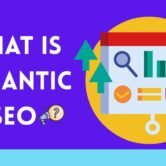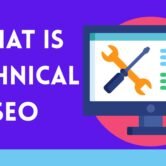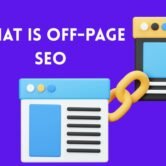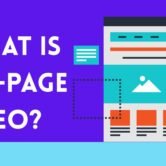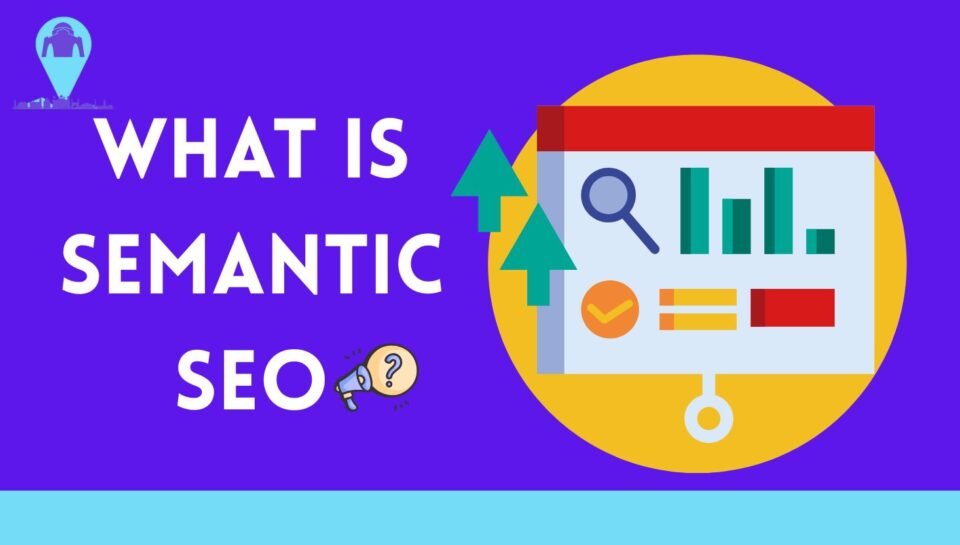
Understanding what is semantic SEO has become essential for businesses aiming to improve their online visibility. Traditional SEO tactics, which mainly focused on stuffing keywords into content, no longer guarantee success. Modern search engines like Google have advanced significantly, shifting their algorithms to better comprehend not just the words users type, but the intent and contextual meaning behind those words. This change means that search engines now prioritize delivering results that truly answer user questions in a relevant and comprehensive way.
Table of Contents
The Evolution of Search Engines
Key Components of Semantic SEO
- User Intent
- Topic Clusters
- Entity Recognition
- Natural Language Processing (NLP)
- Structured Data Markup
- Improved Search Engine Rankings
- Enhanced User Experience
- Increased Organic Traffic
- Long-Term SEO Success
- Better Click-Through Rates (CTR)
Implementing Semantic SEO Strategies
- Conducting Comprehensive Keyword Research
- Creating High-Quality, Contextual Content
- Utilizing Structured Data
- Optimizing for Featured Snippets
- Monitoring and Adjusting SEO Efforts
Understanding Semantic SEO
Semantic SEO is an approach that focuses on optimizing content based on the meaning and context of search queries rather than just individual keywords. It involves creating content that answers the user’s intent and provides comprehensive information on a topic.
The Evolution of Search Engines
Traditional search engines relied heavily on keyword matching to rank content. However, with advancements in artificial intelligence and machine learning, search engines have become more adept at understanding the context and intent behind search queries.
Key Components of Semantic SEO
Key components include structured data, natural language use, topic relevance, and internal linking. These elements work together to make your content clearer and easier for search engines to interpret.
User Intent
- Definition: Understanding the purpose behind a user’s search query.
- Importance: Aligning content with user intent ensures relevance and satisfaction.
- Application: Tailoring content to address informational, navigational, or transactional intents.
- Example: A search for “buy running shoes” indicates a transactional intent.
Topic Clusters
- Definition: Organizing content into related groups centered around a main topic.
- Importance: Enhances site structure and helps search engines understand content hierarchy.
- Application: Creating pillar pages linked to related subtopics.
Entity Recognition
- Definition: Identifying and understanding distinct concepts within content.
- Importance: Helps search engines accurately interpret content and its relevance.
- Application: Using structured data to mark up entities like products, events, or organizations.
Natural Language Processing (NLP)
- Definition: The ability of search engines to understand and process human language.
- Importance: Improves the accuracy of search results by interpreting nuances in language.
- Application: Writing content that mirrors natural speech patterns and includes related terms.
- Example: Using “how to bake a chocolate cake” instead of just “chocolate cake recipe.”
Structured Data Markup
- Definition: Embedding code into web pages to provide additional context to search engines.
- Importance: Enhances search engine understanding and can lead to rich snippets.
- Application: Implementing schema.org markup for articles, reviews, or products.
Benefits of Semantic SEO
Semantic SEO helps search engines understand your content’s true meaning, boosting your site’s relevance and ranking. It improves user experience and attracts more targeted traffic.
Improved Search Engine Rankings
- Explanation: By aligning content with user intent and context, semantic SEO helps improve rankings in search engine results pages (SERPs).
- Impact: Higher visibility leads to increased organic traffic.
- Example: A well-optimized page for “best budget smartphones 2025” can rank higher for related queries.
Enhanced User Experience
- Explanation: Providing comprehensive and relevant content meets user expectations and needs.
- Impact: Leads to longer site visits and reduced bounce rates.
Increased Organic Traffic
- Explanation: Semantic SEO attracts users through contextually relevant content, increasing organic traffic.
- Impact: More visitors can lead to higher conversion rates.
- Example: A blog post answering “how to start a podcast” attracts aspiring
Increased Organic Traffic
- Example: A blog post answering “how to start a podcast” attracts aspiring podcasters searching for beginner-friendly advice.
- Benefit: Drives steady, long-term traffic as content ranks for a wider variety of related search terms.
- Additional Tip: Use keyword variations and questions that users might search.
- Result: More relevant visits with greater potential for engagement and conversion.
Long-Term SEO Success
- Definition: Semantic SEO provides lasting value by focusing on evergreen, informative content.
- Stability: Content optimized for meaning and intent stays relevant through search engine updates.
- Example: A comprehensive article on “what is semantic SEO” remains useful for years.
- Strategy: Regularly update and expand content to maintain its authority.
- Outcome: Stronger domain authority and better resilience against algorithm changes.
Better Click-Through Rates (CTR)
- Explanation: Content that matches user queries and appears in rich results earns more clicks.
- Why It Matters: Higher CTR signals relevance and boosts ranking.
- Tactic: Use structured data, meta descriptions, and titles aligned with semantic meaning.
- Result: Enhanced visibility in SERPs and increased traffic from impressions.
- Extra Value: Rich snippets often lead to featured positions or “People also ask” sections.
Implementing Semantic SEO Strategies
To implement semantic SEO, focus on using related keywords, creating topic clusters, and optimizing content for intent. This approach helps search engines connect concepts, not just exact words.
Conducting Comprehensive Keyword Research
- Approach: Focus on keyword clusters instead of single terms.
- Toolset: Use platforms like Google’s NLP API, SEMrush, or Ahrefs.
- Goal: Discover semantic relationships, synonyms, and related queries.
- Tactic: Build keyword maps covering various user intents.
- Result: A diverse set of terms that increase the content’s search visibility.
Creating High-Quality, Contextual Content
- Method: Write content that thoroughly explains the topic and answers common questions.
- Quality: Focus on originality, depth, and usefulness for the reader.
- Structure: Use headings, bullet points, and internal links to clarify structure.
- Language: Write in natural, conversational tones to align with NLP processing.
- Result: Content that performs well in both search rankings and user experience.
Utilizing Structured Data
- Definition: Schema markup helps search engines understand your content better.
- Purpose: Enables enhanced listings like reviews, FAQs, and product details.
- Types: Use schemas for articles, events, recipes, businesses, and more.
- Tools: Google’s Structured Data Markup Helper and Rich Results Test.
- Impact: Increases visibility and relevance in semantic search results.
Optimizing for Featured Snippets
- Goal: Capture the “zero position” in Google by answering questions concisely.
- Technique: Provide clear, concise answers in paragraph, list, or table format.
- Content Tips: Use headings like “What is Semantic SEO?” to target queries directly.
- Result: Enhanced visibility and authority as a trusted source.
- Bonus: Improves voice search potential by being the answer engine selects.
Monitoring and Adjusting SEO Efforts
- Tools: Use Google Search Console, Google Analytics, and SEO platforms.
- Metrics: Track CTR, bounce rate, time on page, and keyword performance.
- Adjustment: Update content to stay relevant and match new search trends.
- Strategy: Repurpose top-performing content into new formats (videos, infographics).
- Outcome: Continual improvement of content performance and ranking.
Challenges in Semantic SEO
- Content Complexity: Writing semantically rich, comprehensive content takes more time and research.
- Technical Skill: Implementing structured data and understanding NLP requires a learning curve.
- Algorithm Shifts: Search engines evolve, and staying updated is necessary to maintain success.
- Competitive Landscape: More sites are adopting semantic SEO, raising the bar.
- Content Maintenance: Regular audits are needed to keep content accurate and up-to-date.
Conclusion
Semantic SEO is no longer an optional tactic it’s essential for staying competitive in modern search engines. It shifts the focus from simply ranking for keywords to understanding what users are really looking for. By leveraging context, intent, and relationships between topics, you create content that not only ranks well but also truly serves your audience.If you’ve been wondering what is semantic SEO, it’s a powerful strategy that aligns your content with how search engines and users think. Start implementing these strategies today to boost visibility, drive organic traffic, and build long-term authority.
FAQs
1. What is semantic SEO in simple terms?
Semantic SEO is the practice of optimizing content based on meaning and context, not just keywords.
2. Why is semantic SEO important?
It helps search engines understand your content better, improving rankings and relevance.
3. How do I apply semantic SEO to my website?
Use topic clusters, related keywords, structured data, and write for user intent.
4. Does semantic SEO improve voice search results?
Yes, because it focuses on natural language and user questions, which voice searches often use.
5. What tools help with semantic SEO?
Useful tools include Google NLP API, SEMrush, Ahrefs, and schema markup generators.



